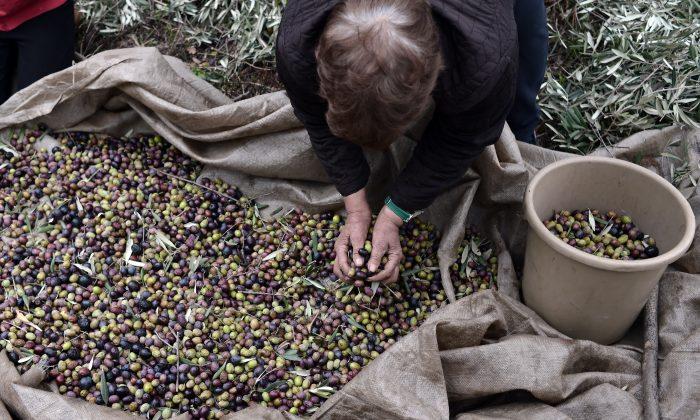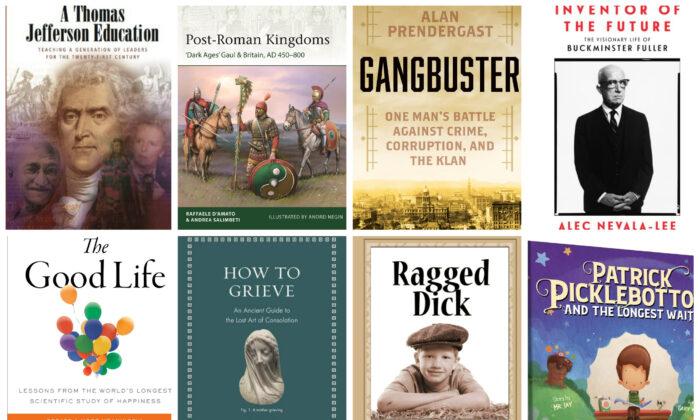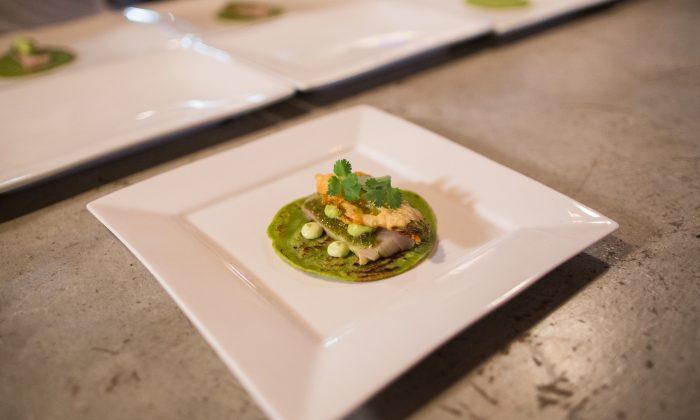Very few Americans have tasted proper olive oil. In most pantries lurks rancid olive oil, masquerading as extra virgin.
“A large percentage of Americans are happy with defective oils because that’s all they know,” said David Neuman, president of olive oil company Lucini, which works with small regional farmers in Tuscany.
In light of its much-touted health benefits, olive oil is coming under greater scrutiny in the United States, and it’s clear that not all olive oil is created equal.
Right from the olive groves until it hits the shelves, there are a number of things that can go wrong.
“Olives are particularly complicated because you’re consuming in pure form,” said Neuman. “Once they’re crushed, the clock is ticking. With other foods, like wine, balsamic vinegar, you can mess with it, even if it didn’t go right at first. But olive oil has to be done right from the moment it’s picked.”
New World Palates
“America’s a dumping ground for leftover oil,” said Nicholas Coleman, an olive oil expert and chief oleologist at Eataly in Manhattan’s Flatiron District.
In a way, it’s not surprising if consumers can’t discern between good and bad olive oil. The Italians and Greeks may have had a love affair with it for thousands of years—used it as currency, food, skin ointment, lamp fuel—but for most Americans, it’s a relatively new product.
“Good, wonderful olive oil is something that people in the Mediterranean take for granted, they grew up with that,” said food historian Francine Segan. As a result, their palates are better able to detect when the oil is rancid or adulterated. “But for those of us who didn’t grow up with good olive oil, it’s harder to know what’s the proper taste.”
She said there are parallels in history where people tend to prefer a defective taste, because that’s what they were used to. “Case in point: Hershey chocolate! At the time Hershey’s milk chocolate was first made the process of adding milk to the cocoa solids wasn’t perfected so the milk became a bit rancid. Not dangerously so, no one became ill eating it, but it had a bit of a ‘baby spit up’ taste, as some have called it. With time, the process was perfected, but when Hershey changed the formula for the correction, consumers balked. They preferred the original flavor!”
Historically, what Americans were used to were lighter-tasting oils.
“In a way, if you were going to have olive oil in the old days from a leaky, salty ship with containers that would have let in the salt, let in the air, wouldn’t you be better off with sunflower oil or corn oil that is right here on our shores and will be fresher tasting? So for us, in this country, we grow up more with the familiarity of those lighter olive oils, like corn oil, because if we did taste olive oil if it came over somehow—I’m talking before the ‘50s—it would have been a mess,” Segan said.
And yet, transport is still an issue. Neuman said some companies ship olive oil in tankers for five weeks on the ocean, from Italy to the East Coast, where it is bottled. “Think of how volatile olive oil is. The oil will get beat up, will get rancid.” As a trained taster, he can detect the “fusty” defect the oil can get from the muddy, sludgy settlement at the bottom of the tankers.
You Get What You Pay For
It’s hard to get around the fact that good olive oil is expensive. When you’re faced with a $17 bottle and a $5 bottle, you’re staring at the difference between a Lexus and a Hyundai, Newman said. “Retailers aren’t charging arbitrarily more unless there’s value.”
He points to the bad oil being sold in supermarkets. “Those supermarket olive oils, with Italian-sounding names, that’s where the bad oil is.” Or olive oil served at restaurants from food service tin barrels—it’s rancid.
Look for as much information on the bottle as possible, from the harvest date, to where the olive oil is coming from, to the acidity levels (less than 0.8 percent for extra virgin) but here’s the real challenge: taste it. Taste it straight, not as dressing, and not on food. If you’ve brought home olive oil from the store that you don’t like, take it back to the store, Neuman said.
The Taste of Real Olive Oil
Tasting the real thing is often an epiphany, an experience far different and removed from expectations.
Coleman first tasted freshly pressed extra virgin olive oil in Arezzo, Italy, in 2007, with his mentor Nadia Gasperini Rossi.
“We had just returned from the frantoio [olive press] with her new oil. She had prepared a very typical Tuscan peasant dish for me called ribollita, which varies from household to household, but is always focused around four primary ingredients: white cannellini beans, cavolo nero (black cabbage), leftover bread, and fresh Tuscan oil.
“With the dish piping hot, she finished it with a very generous amount of fresh oil, causing all the aromas to waft straight up my nose, intoxicating my senses. and transporting me right back to the very field we had harvested the olives in. Pungent notes of freshly cut grass and herbs brightened up the other ingredients making the soup come alive in a way I had never experienced before. It completely blew me away,” Coleman said
Olive oil acts as a conductor for flavors, whether you’re cooking with it or finishing a dish.
“Aside from salt, nothing is as versatile,” Coleman said. Take fish and drizzle on some olive oil: “The green droplets [of olive oil] elongate the flavors. It’s never the soloist. It’s like the bass, to support other instruments.”
At Eataly, there are more than 90 olive oils and it’s best to choose based on what you’re cooking.
Coleman recommends getting a delicate oil (for fish or salads) and a robust oil (for steak or soup, for example). If you want to get deeper into it, then there’s the world of regional olive oils that you can get into. He brought up the expression, “What grows together goes together,” which means roughly this: if you’re cooking a Sicilian dish, get a Sicilian oil, or if you’re making a Spanish dish, get a Spanish one.
There’s nothing like tasting good olive oil to realize what you’ve been missing out on. Coleman guided me through an eye-opening tasting of a handful of Eataly’s extra virgin olive oils, all single-estate, artisanal products. They were wildly different but none were neutral. Some were delicate, green, others whose bitterness hit me in the throat seconds later, inducing a cough.
It was OK to cough, he reassured me—in some circles, olive oils are rated as one-, two-, or three-cough oils. The bitterness indicates the presence of healthful polyphenols, a type of antioxidant.
One thing to be said about tasting proper extra virgin olive oil: After you try it, you’ll be rushing to throw out the adulterated, rancid oil that may be lurking your pantry and seeking out the real and wonderful olive oil.
Eataly offers a course on olive oil, led by Coleman, with tastings and food pairings (upcoming dates: Dec. 28, Jan. 18, and March 8).






Friends Read Free